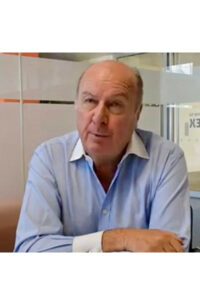They Came, They Saw but Did They Dither?

They Came, They Saw but Did They Dither?
Of the plethora of central bank meetings last week, the actions of the Fed and the Bank of England were the most significant. That is not to denigrate Governor Kazuo Ueda of the BoJ but simply to underline the fact that there was, as usual, more clarity on their actions than his. Japan is clearly laying the groundwork for tightening to come in the future and, simultaneously, trying to talk the yen higher, with little success so far. It seems that Japan is finding their economy’s addiction to zirp hard to kick, which indeed it is, as other central banks are also finding out. Meanwhile it seems that equity markets seem to continue to believe it is still on the agenda. Anyway, back to the start and the actions of the Fed and the Bank of England, both of whom, in their way, unsettled the markets but, in the end, left the underlying tenor of the market unchanged with King dollar still on its thrown.
Higher for longer has now become an almost mainstream saying, as the much-derided term transitory did concerning inflation and has been seen mentioned in such august publications as The Times. Whilst leaving rates unchanged may be seen as a dangerous experiment in the attempt to achieve the holy grail of a soft landing, the Fed made it clear that high interest rates are here to stay for some time and higher for longer should be retired and high for a long time replace it. It some respects, the Fed is allowing the bond markets to do the heaving lifting for them as yields approach 4.5% on the US 10-year. Is that yield restrictive with inflation running at its current levels? The nature of modern markets and their inherent youthfulness says yes, but as the highly respected bond trader Nick Givanovic recently opined that the markets suffer from recency. I am more than old enough to remember when yields showed actual return as opposed to mirror inflation, and as Nick pointed out the US 10-year yield was 8% in 1986 when inflation was 1.8%. I don’t believe we will see that level, but I do think that yields have some way to go north before they stop increasing, and as they do, they will help the Fed slow the economy.
As for the Bank of England, one could be generous and assume that they are taking a similar stance and waiting for the increased level of QT to do the work for them; however, neither your humble scribe nor the currency markets are that generous. The vote of 5-4 to keep rates unchanged, with all the BoE employees on the MPC voting the same way, is yet another example of groupthink. Yes, they did get sneak previews of the poor PMIs released on Friday, but inflation, especially in food, is still running over three times the target level. And with winter approaching, pressure will grow on inflation as oil rises, dragging other energy costs higher. In fairness, there are signs of a slowdown with money supply dropping as are producer input prices. Still, it’s a brave man to call the end of this current bout of inflation, and perhaps subconsciously, they were influenced by the media and politicians squealing about high interest rates. I hope I am wrong, and that inflation is dead and buried, but with politicised trade unions still looking for high-wage settlements and calls for the government to help with energy prices, I’m not sure I will be. Nor are the currency markets who look like they are still happy to be broadly short of the pound.
As is so often the case after a major central bank meeting, we get the follow-up as the participants explain their actions and try to reinforce them. This week is no different, with the speakers’ docket overloaded with, primarily, Fed officials. There is little doubt they will strengthen the high-for-long message and potentially what they wish to see to avoid hiking again in November whilst being cognisant of strike action by the carmakers’ unions and, yawn yawn, the threat of a government shutdown. There is also the little matter of one of the Fed’s favoured inflation measures to look forward to on Friday, the core PCE deflator, which could come in a little higher than the consensus is expecting. Also contained in the inflation report will be personal income and spending data, which is expected to weaken. The Eurozone also sees its latest inflation report published at the end of the week, which could show the impact of higher oil prices on energy inflation, whilst, on Thursday, there are several sentiment and confidence reports all expected to be gloomy. All in all, another interesting week lies ahead as we officially enter Autumn and the last quarter of the year approaches.
20230925












